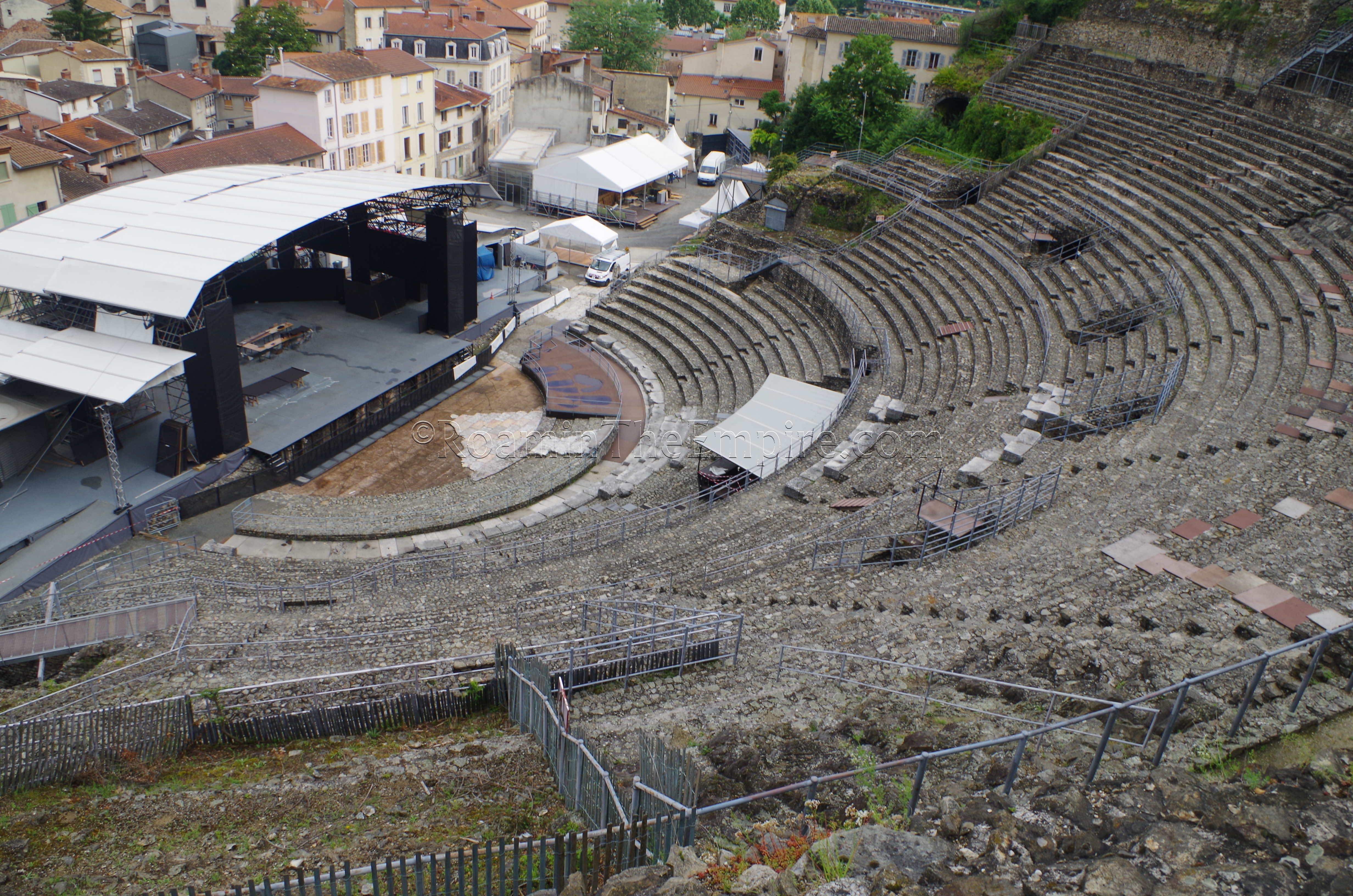
Theater and Odeon
A few minutes to the west of the Jardin Archéologique de Cybèle, at Rue du Cirque 7, is the ancient theater of Vienna. Like the two museums, the theater has the same opening hours and admission price scheme. Like many other relatively intact ancient theaters in Europe, it was set up for hosting concerts for the summer, so, some of the stage area was obstructed. It was, however, less obtrusive than some set ups, as the orchestra area was left open. The theater, constructed using the topography of the hillside as support for the cavea in a more Greek style, is dated to the Augustan period. The estimated capacity of 13,500 spectators makes it the second largest theater in all of Gaul behind that of Augustodunum (Autun), which held 17,000 people.
On the hillside across from the theater (to the south) are the very fragmentary remains of the odeon. Some bits of the stage area and the shape of the cavea, with a few supports, are really all that remains. The area is currently closed and there is only one small section of fence to look in on it. The best view of it really is from the top of the cavea of the theater, though the remains of the stage can’t really be seen from that perspective. The odeon, which was constructed during the reign of Hadrian, had a capacity of about 3,000 people. Along with nearby Lugdunum, Vienna was the only Roman settlement in Gaul to have both a theater and an odeon.
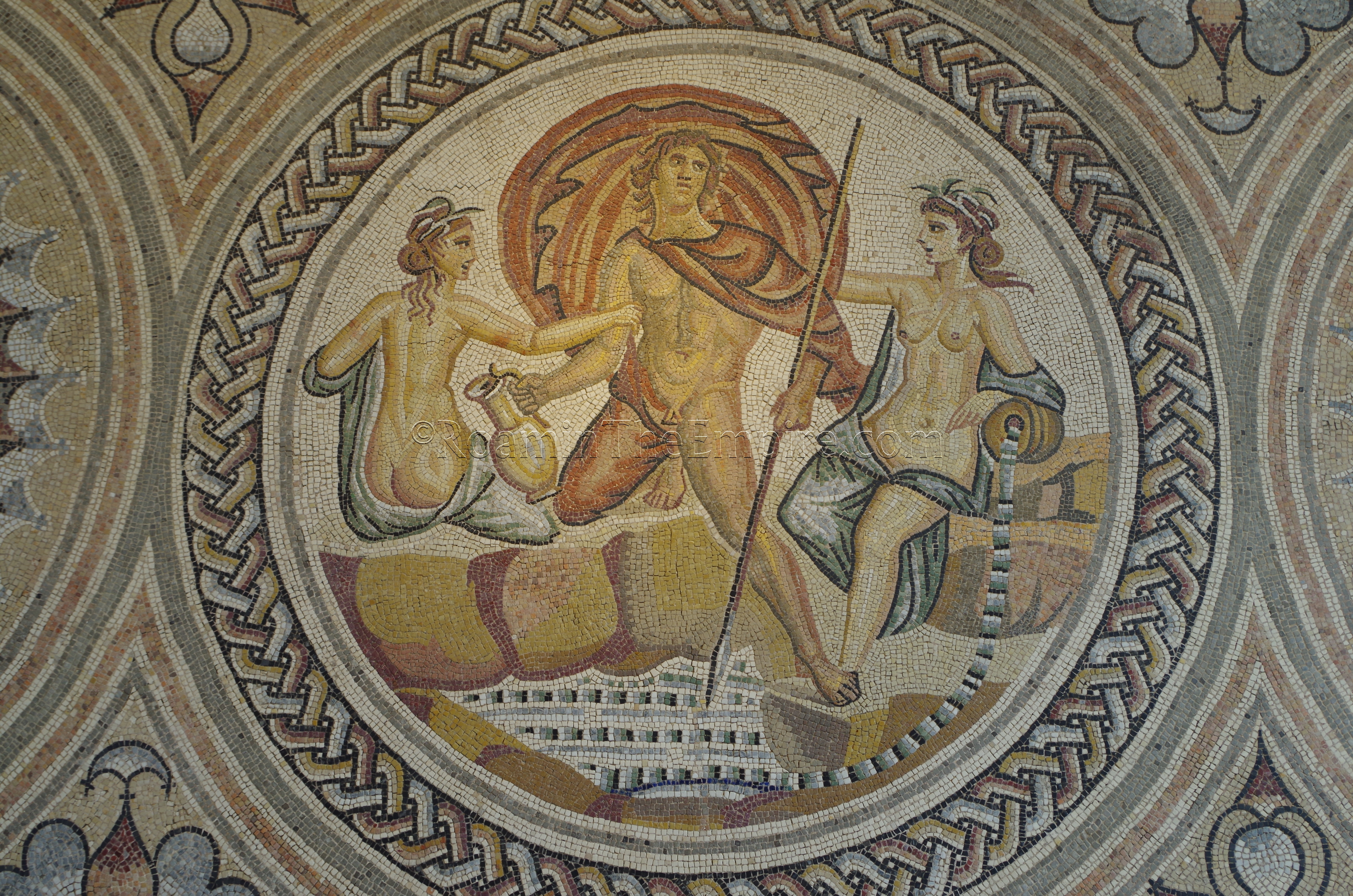
Musée Gallo Romain
The final few remains of Vienna are actually across the Rhône in the town of Saint-Romain-en-Gal which is also technically in a separate department, as Vienne is in the Isère department and Saint-Romain-en-Gal in the Rhône department. About a 10 minute walk from the theater, across the Pont Routier de Lattre de Tassigny is the Musée Gallo Romain and the associated archaeological site at Route Départementale 386. The museum is open Tuesday to Sunday from 10:00 to 18:00 year round, while the archaeological site closes at 17:45 most of the year, except for November through January, when it closes at 17:00. Admission to the museum and site are 6 Euros, though the 8 Euro combination ticket with Vienne sites is also valid.
The museum is quite nice, and is worth visiting first if the timing works out, as it helps to put some of the site in context; in addition to maps showing where in the site some of the finds were discovered, there are also several models of building reconstructions. One kind find a few cases of small finds, but for the most part, the museum focuses on showcasing larger finds, particularly floor and wall decorations. There are a number of excellently conserved figural mosaics, most from the adjacent archaeological site or Vienne, but a few from elsewhere. While geometric mosaics and other floor coverings are also on display, the figural mosaics are quite the draw for this collection. Many of these mosaics were apparently on display at the Musée Archéologique Saint-Pierre up until the construction of this museum, which opened in 1996. Like the museum in Lyon, this museum is set up so that many of the mosaics can be viewed from an upper gallery as well as from ground level.
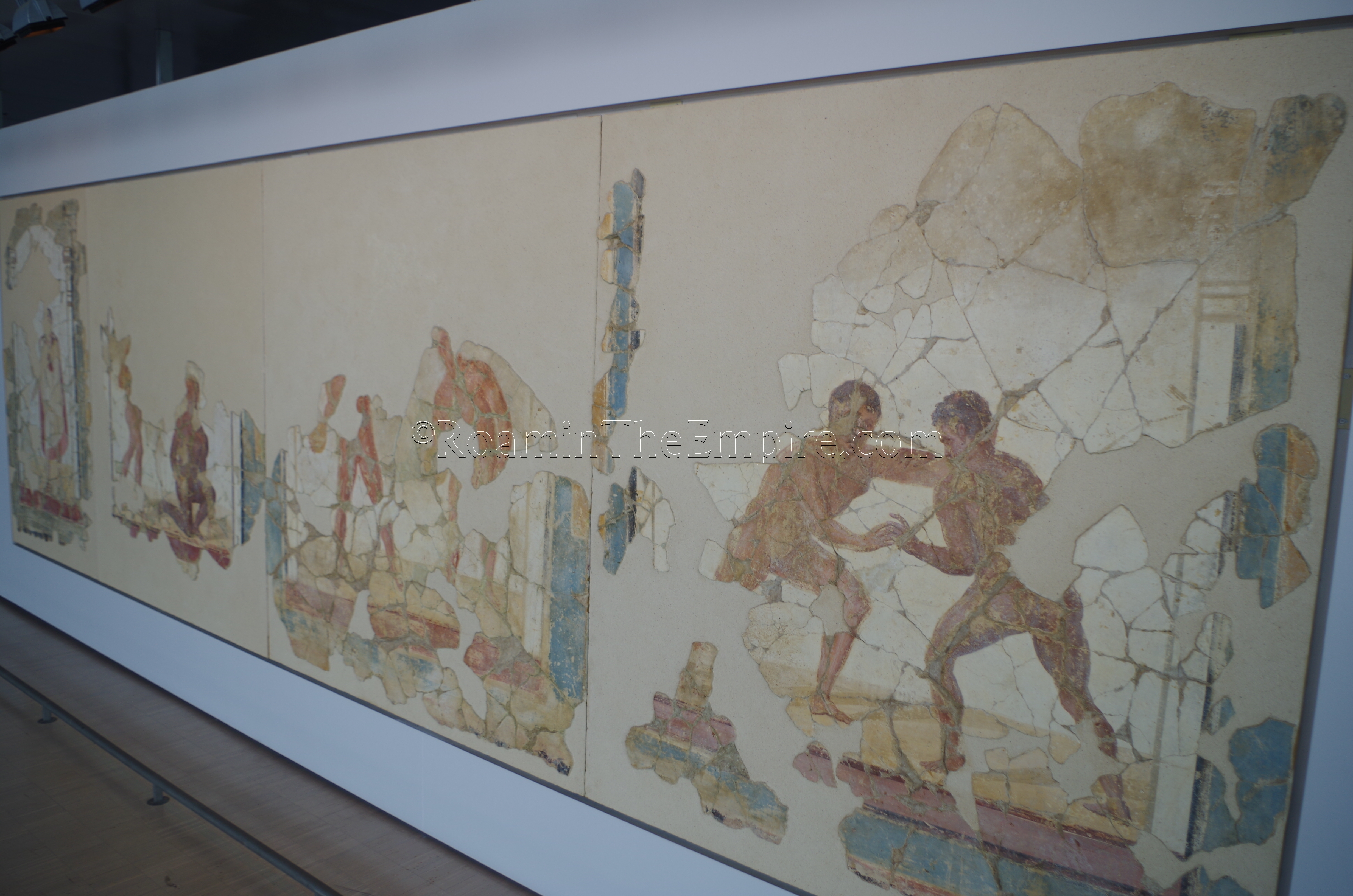
A fresco of athletes, found in Vienne, is one of the non-mosiac highlights of the collection. Interestingly, there is not much in the way of large sculpture or inscriptions on display, as much of that collection seems to have stayed at the Musée Archéologique Saint-Pierre. A portion of the museum is devoted to room reconstructions from the archaeological site; using mosaics as well as a few larger artifacts and furniture reconstructions to give visitors a sense of how certain rooms would look. Because of the large number of mosaics, even though the museum is sizable, it actually doesn’t take all that long to get through; it took me a little over an hour. Though, part of that owes itself to the fact that while there is a lot of information in the signage, it’s all in French. This probably sped things up a little for me, and if you can read French, I could see it possibly taking a little longer. Regardless, the museum is quite worth the visit, if not just for some of the mosaics alone.
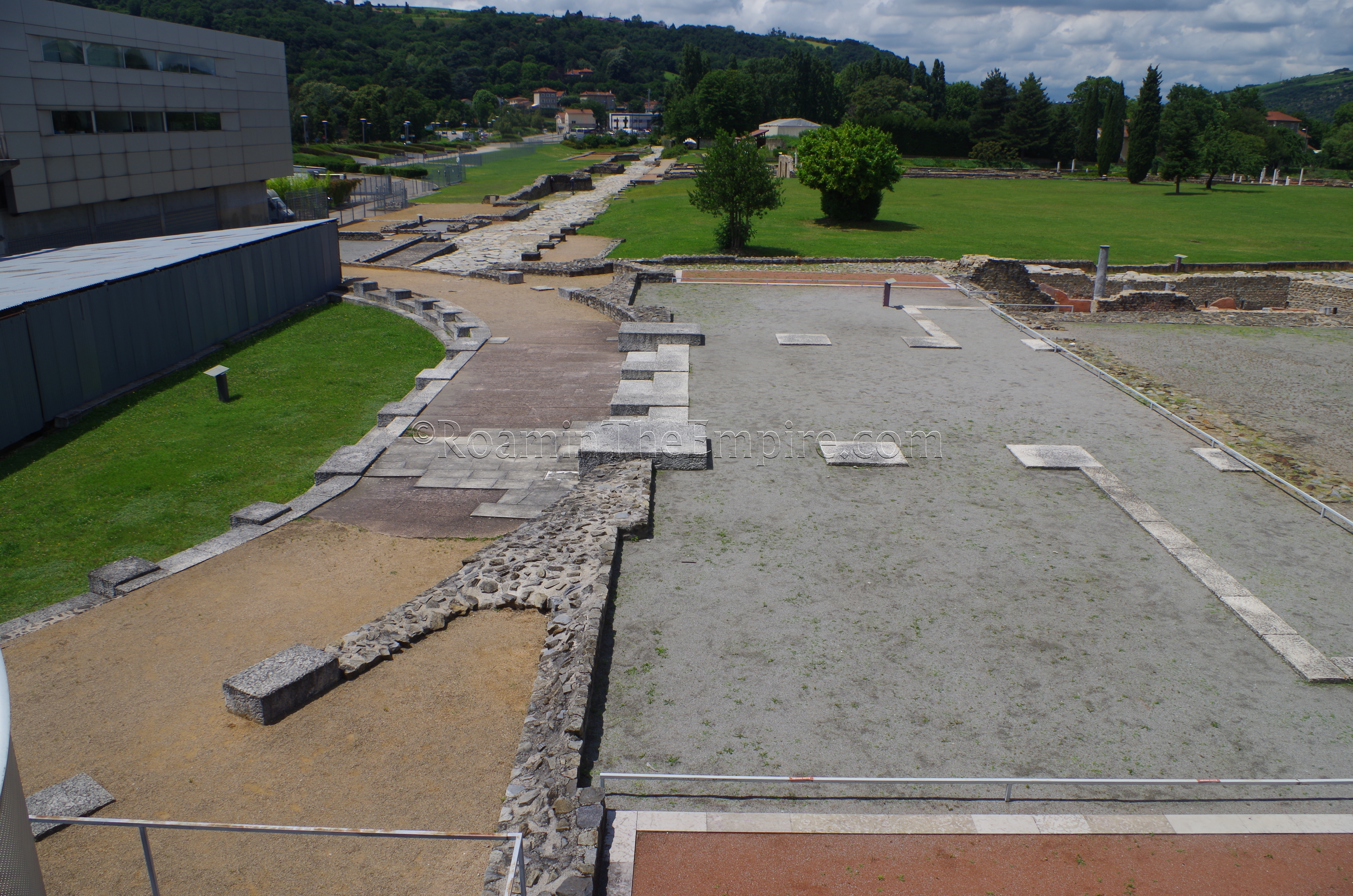
Saint-Romain-en-Gal Archaeological Park
After completing the circuit of the museum, the site quite literally begins right outside the door with a portion of a large bathing complex dating to about 60 CE, and referred to as the Baths of the Wrestlers. Because all the rooms are displayed at floor level, it’s a bit difficult to discern the rooms visually, but, the northernmost room is the caldarium, followed by the tepidarium in the middle, and the frigidarium as the southernmost of the main rooms. Further south of that is a large semi-circular hemicycle that enclosed the palaestra of the baths. Inside the palestra is the natatio, which is currently covered and seemingly being restored. There is a small area where the interior can be seen, though, there isn’t a whole lot to look at. On the western end of the baths is a heavily restored latrines, complete with a nymphaeum in the center. The praefurnium area can be seen between the latrines and the heated rooms.
Immediately north of the baths is an unexcavated area, but further on are a few houses, commercial area, and a bathing complex. The southernmost house excavated is the Maison de Sucellus, the House of Sucellus, named after a relief of the Gallic god Sucellus which was found there (and on display in the museum). The house dates to the 2nd century CE and measures about 1,500 square meters in area. Other than a few reconstructed columns and a fountain in the peristyle, there’s not much of note visible with the house. Although one of the rooms is noted as having a hypocaust system found, there are no traces of it remaining. Immediately to the east of the house is a small commercial area.
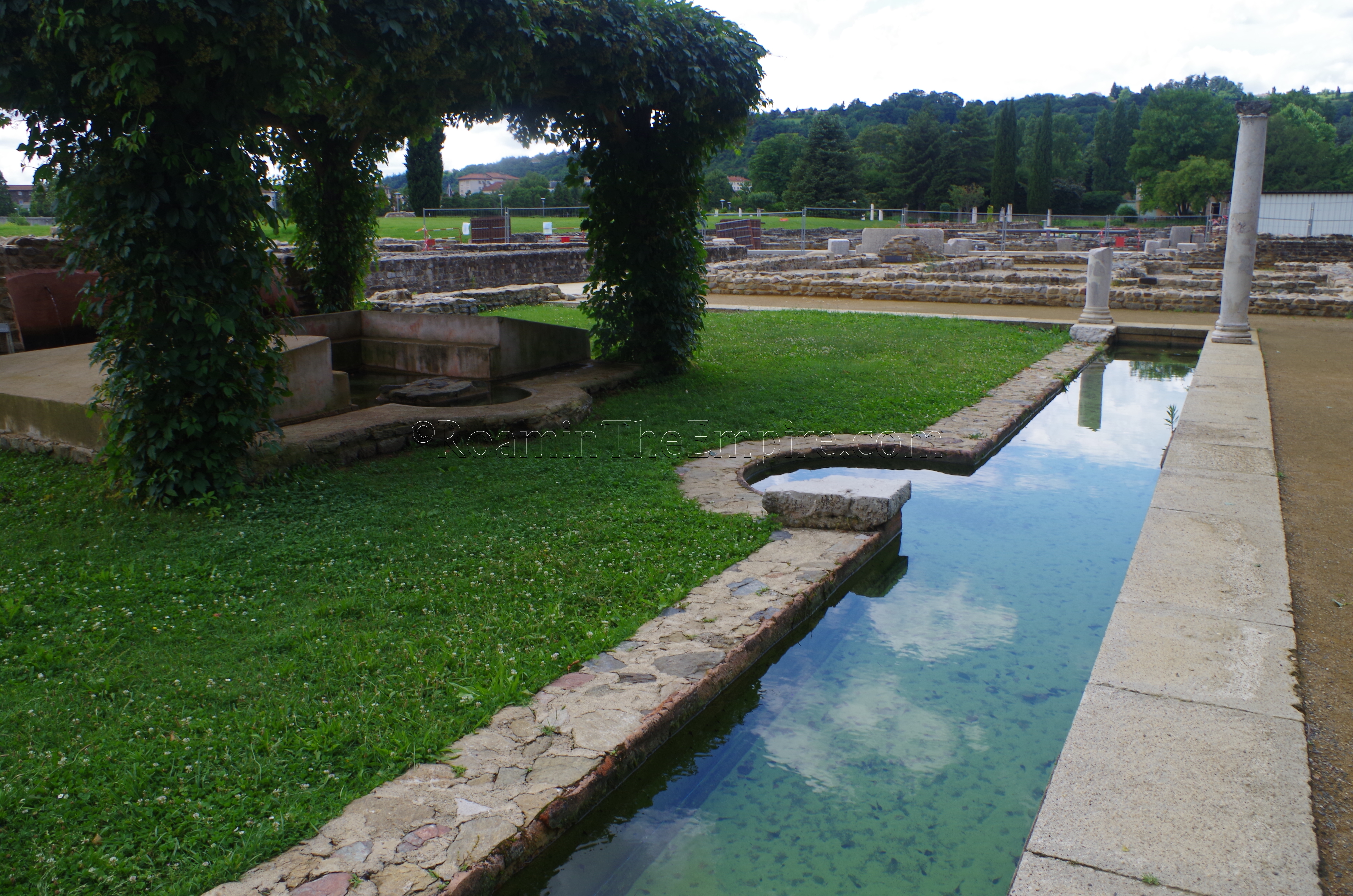
North of the House of Sucellus is the Maison aux Colonnes, the House with Columns, on the west and the Maison aux Poissons, the House with Fish, on the east. The House with the Fish was even larger than the House of Sucellus at 2,000 square meters, but much of it spills outside the archaeological park. It was originally constructed about 60 CE, but apparently underwent a large-scale renovation in the 3rd century that added a few heated rooms and latrines, the latter of which have reconstructed wooden seats to illustrate the space. Again, while no traces of the hypocaust system are visible, the rooms are excavated down below floor level to show the depth needed for the necessary space to heat the rooms. The house derives its name from a mosaic with fish found in one of the rooms.
West of the House with the Fish is the House with the Columns, which as its name would suggest is notable for the presence of columns. The columns, however, seem kind of secondary, as it is the elaborate summer triclinum with a fountain, surrounded by water features and a colonnade, which is the most interesting point of this house. The House with the Columns, like its neighbor, was constructed about 60 CE and underwent later renovations, but was overall quite a bit smaller at about half the size. Adjacent to the triclinum is a heated room with a partially reconstructed hypocaust system.
West of the House with the Columns, between that house and the paved road, is the Northern Baths, constructed about 160 CE. The southern portion of the bathing complex is made up of shops and latrines, while the core rooms of the baths are protected within an enclosure on the north side. Though protected, the remains are a little hard to make out; there is, however, a sign there that illustrates the layout. While there are no mosaics, the construction materials used in the baths seem to be rather fragile, which must be why they are protected.
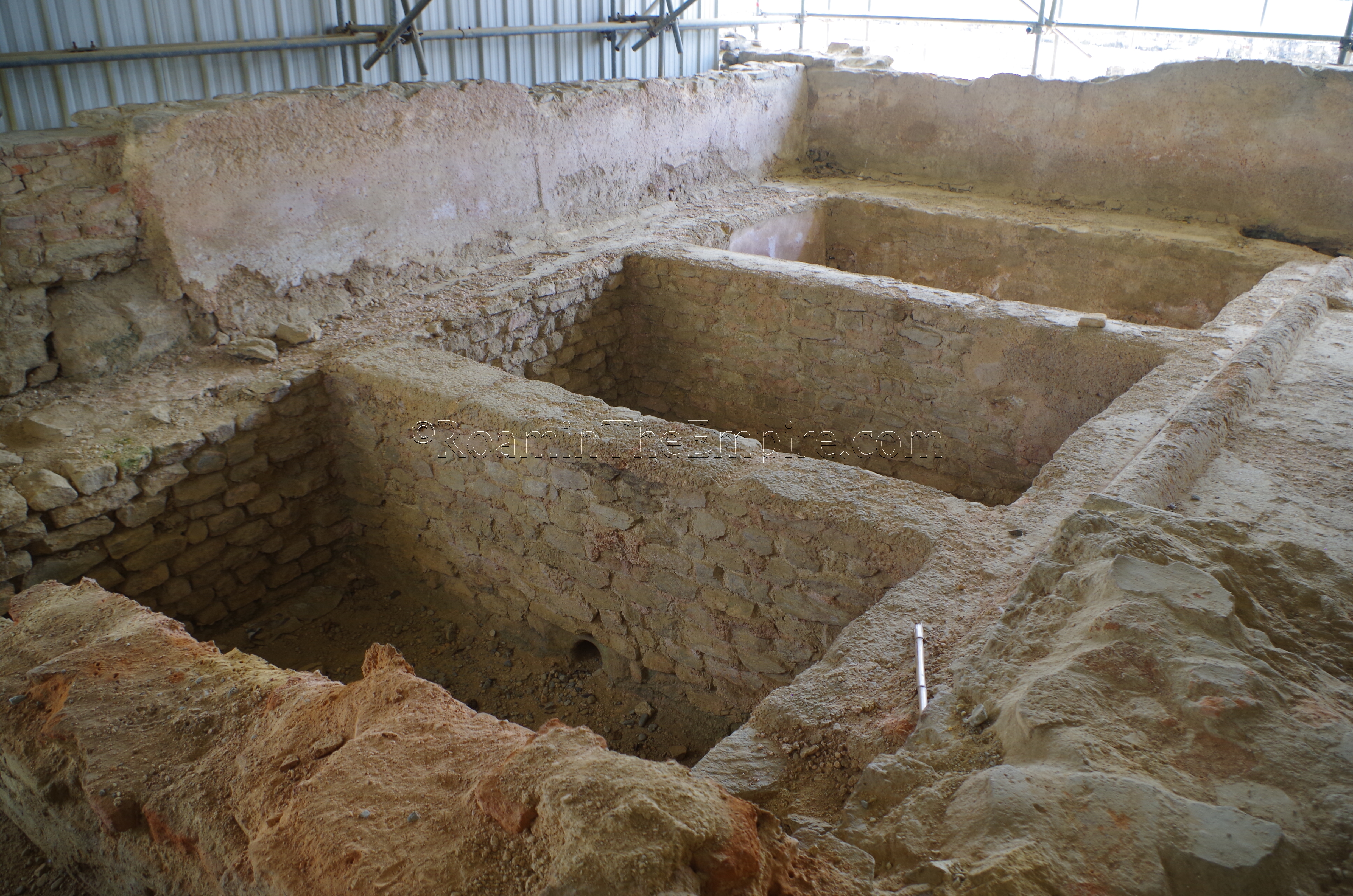
Across the road to the west, contained in a triangular area between two cardines, is an industrial area. The northern part of this area is taken up by what are identified as artisan workshops. Toward the center, however, there is an enclosed area with several basins. This central area is identified as perhaps being a fullonica or a dye workshop. The latrine just across the road in the Northern Baths would have served as a convenient source of urine for use in either of those activities. The southern part of the industrial area is alternatively identified as a macellum or possibly an area associated with leather tanning and fabric dyeing. The hearths in the center of this area are what drive the latter identification. This area seems to have been constructed in the 2nd century CE, and excavations below that level (on display in a glass case here) reveal the presence of a house.
Opposite the industrial area, to the west, are the remains of a series of horrea constructed in the mid-1st century CE. In one of these, at the northern extent of the complex, a drainage system comprised of inverted amphorae has been excavated and preserved within a glass case, noting a method of drainage used to help extend the life of perishable goods.
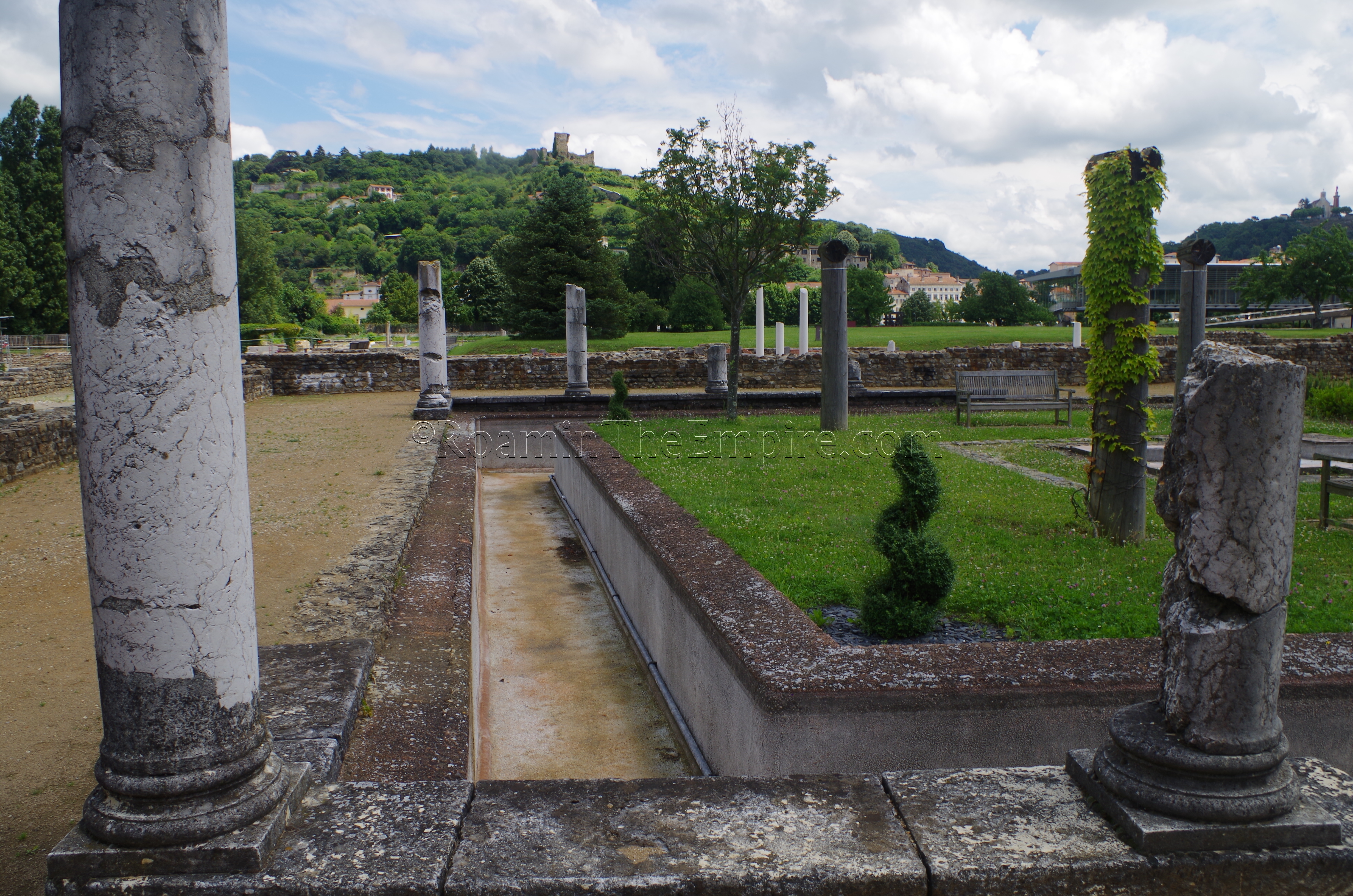
The insula to the south of the horrea is dominated by the large Maison des Dieux Océan, the House of the Ocean Gods. The roughly 3,000 square meter dwelling is so named because of a mosaic found in the atrium (and displayed in the museum, though a copy exists in-situ) that depicts ocean gods. The house, one of the largest found in all of Gaul, was originally constructed during the reign of Augustus, but underwent several expansions and renovations in the following century, and what is on display now reflects a construction of about 160 CE. Among the features of the house are two elaborate gardens, one with multiple water features and surrounded by a portico and the other with a peristyle, and a small bathing area.
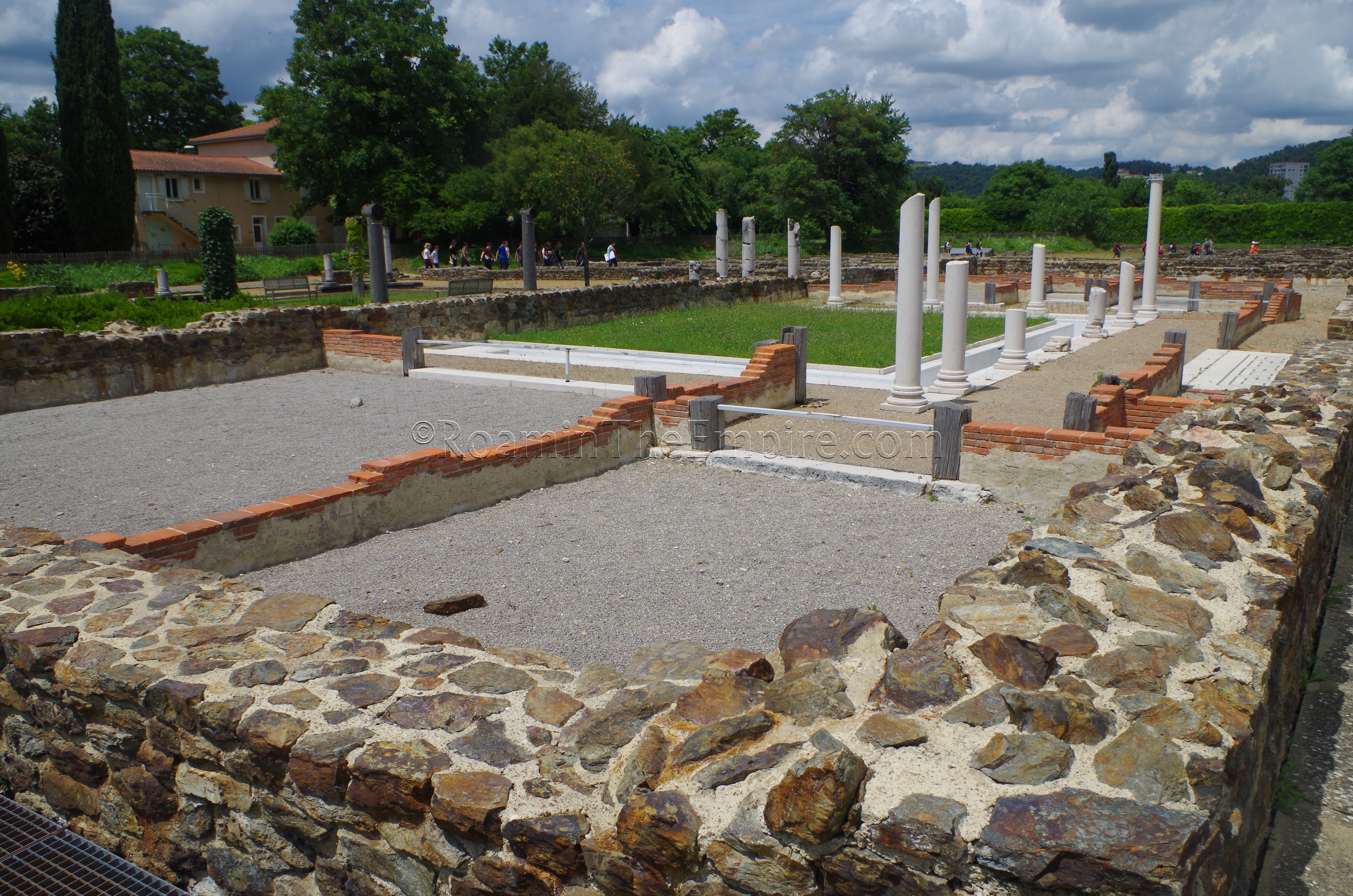
Adjacent to this is the much smaller Maison aux Cinq Mosaiques, the House with Five Mosaics, which may have been connected to the House of the Ocean Gods later in the life of the neighborhood. The House with Five Mosaics is so named because of the mosaics found there, none of which remain in-situ. Otherwise, the small house is very heavily reconstructed. South of that, and east of the House of the Ocean Gods, is another industrial area. Among the features here are another example of the amphora drainage system, a few small basins, and a reconstructed portal. The exact nature of the area, however, has not been determined.
Running along the southern extent of the site are the remains of a large, monumental portico, the western extent of which (relative to what is uncovered, anyway) is capped by a hemicycle with some interesting subterranean passages preserved. Throughout the site there is also a significant amount of road preserved, as well as accompanying drainage. Most features have explanatory signs, though they are mostly in French, with a short fact or two in English. Many of these signs also have illustrations or plans of the buildings they are discussing. Overall, I spent a little over an hour making my way through the archaeological site.
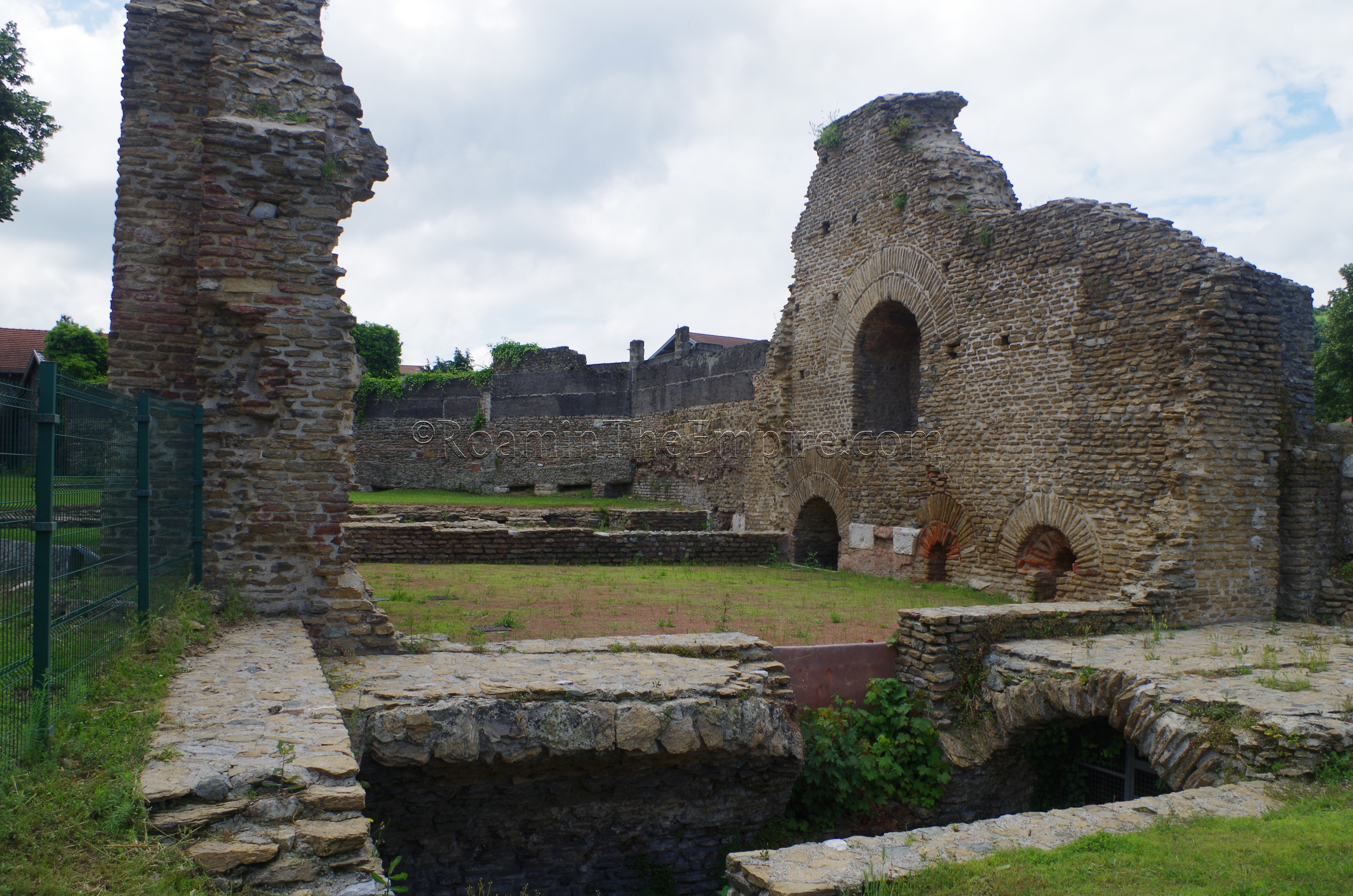
Le Palais du Miroir
The final bit of Vienna that is visitable is outside the archaeological park, across the D502 highway, roughly opposite the hemicycle of the monumental portico. Located here are some remains of a bathing complex, Le Palais du Miroir, the Mirror Palace. The immediate area around the baths is closed off by a fence, but, most of it is viewable from public areas or the parking lot of the adjacent hardware store when it is open (the parking lot of the hardware store is gated, and presumably closed when the store is closed). The baths apparently date to the 1st century CE.
The town abutting Saint-Romain-en-Gal to the south, Sainte-Columbe, has been in the news recently for the ongoing excavation of the well-preserved remains of a residential area with mosaics and wall painting preserved. As near as I can figure, this site is located just to the southwest of the town hall, which is about a 10 minute walk from the Gallo-Roman museum. The site, however, was completely inaccessible, and there didn’t really seem to be any place to get any kind of view. Reading the articles, I’m not sure if the site will be preserved in any kind of meaningful way for future visit, or if they intend to continue with construction of the residential buildings on the site.
While there is a lot to see in Vienne and Saint-Romain-en-Gal, it makes for a very good day trip from Lyon. All the sites and museums are easy to fit into a day. Though I didn’t have time to go searching the surrounding hills for apparent vestiges of the city walls and aqueducts (which I had no solid information on, just vague hints of the existence of such remains in generalized areas), but I was also not rushed for what I did see. As a whole, it’s very worthwhile as a stop.
Sources:
Bromwich, James. The Roman Remains of Southern France: A Guidebook. London: Routledge, 1996.
King, Anthony. Roman Gaul and Germany. University of California Press, 1990.
Livy, Ab Urbe Condita, 21.31
Martial, Epigrams, 7.88.
Polybius, Historia, 3.49-50.
Stillwell, Richard, William L. MacDonald, and Marian Holland. McAllister. The Princeton Encyclopedia of Classical Sites. Princeton, NJ: Princeton U Press, 1976.
Strabo, Geographica, 4.1.11.


